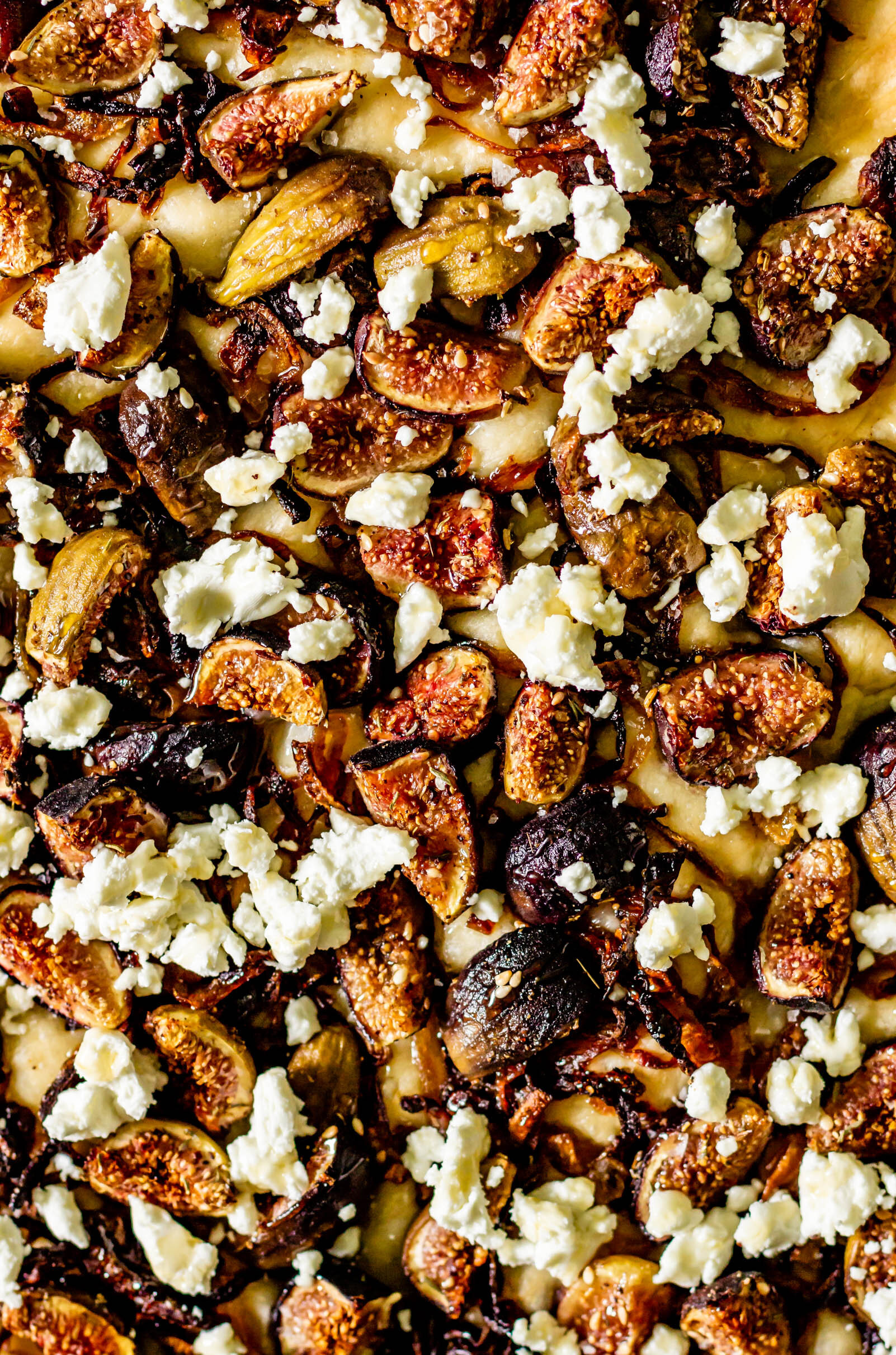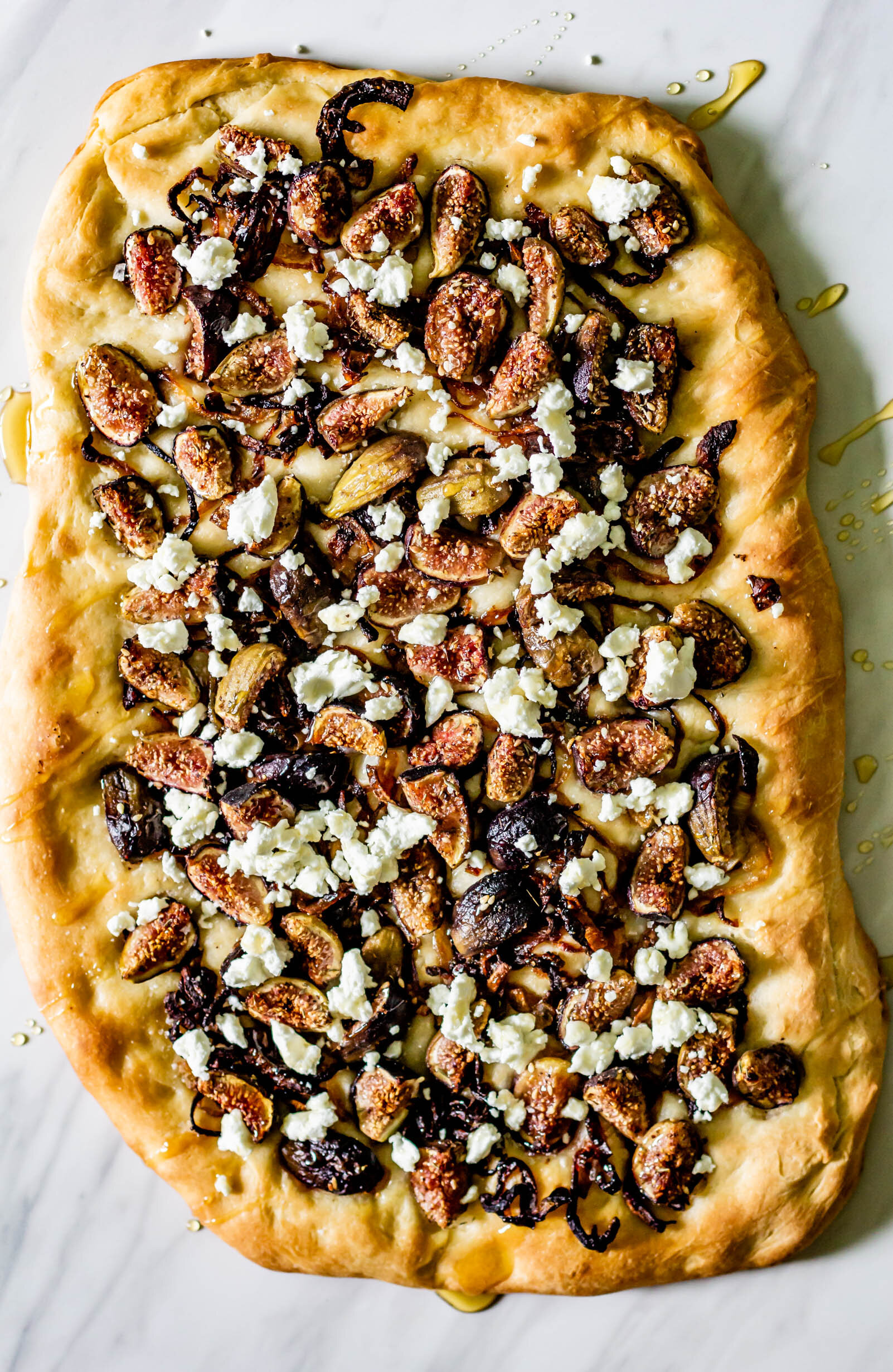Schiacciata with Caramelized Onions and Figs
/I’ve been feeling pretty old this week. While I haven’t been creator in this food blogging world for very long, I’ve been an avid food blog reader and cookbook enthusiast since my freshmen year of college…which was over ten years ago. Back then, the only way to discover new blogs was to spend hours browsing through Food Gawker or Pinterest, and through their writing, these food bloggers quickly became virtual friends. I would regularly check their websites for new content. Not just recipes, but stories and short little essays about their lives, friends and family, and yes, cookies. I would invite these cooks into my kitchen in the form of their recipes, not because their pictures were perfectly styled or they had massive followings, but because their writing and their recipes resonated with me. I loved this little world of food blogging and dreamed about one day being a part of it. I dreamed about writing stories that people got excited to read, developing new recipes that my own little community looked forward to each week, and through this blogging portal, entering into a stranger’s kitchen and coaching them through making something new.
Fast forward a handful of years and the food blogging landscape looks a little different. Those people whose websites I ran back to time and time again are still out in the blog-o-sphere, and they are still the ones I go to for inspiration, though I’ve added a few new ones to the mix. But sometimes it feels like the future of food blogging hinges on flashy images that catch your attention in a nano-second, or easily-digestible clips that can be viewed (or skipped over) in an instant. At risk of sounding like a crotchety old lady, the thing I love most about food is that it is an experience. Kneading dough takes time and tactile effort. Waiting for bread to rise takes patience, and decorating cakes is intricate work. In order to be successful in this industry, do I have to hack all of that away in an effort to gain more likes? I don’t know the answer to this. I don’t think any of us in this little world really know the answer to this, but I find myself asking if there is still space for my slightly old school approach to food blogging in this fast-paced industry. I think it will be a little give and take and I’m working to find my niche in a way that feels authentic to me, while also using the tools that technology affords me as a way to grow my business. With all of the craziness of the past few months, I think we’ve all had our eyes opened to the importance of slowing down and I’ve been thinking a lot lately about how to carry that with me as life begins to speed up again.
Now, lets talk schiacciata! Schiacciata is a Tuscan-style flatbread, similar to a focaccia but with a lower hydration level which makes it a little thinner and a little crisper. As if focaccia and pizza had a baby. It’s an easier dough to throw together and only needs a couple of hours to do it’s thing, which means you can start it in the afternoon and eat it for dinner. The recipe for this dough is lightly adapted from Sweet by Helen Goh and Yotam Ottolenghi, which is my very favorite book of all time. The dough is topped with tangles of caramelized onions and fresh figs that have been tossed in za’atar and feels like that perfect time of year when summer nights are waning, but fall hasn’t quite arrived. You can by za’atar at your local Middle Eastern Market or on Amazon, but I made my own using this recipe. It’s fairly simple and uses mostly spices that you already have on hand.
Schiacciata with Caramelized Onions and Figs
Yield: 1 10x16” flatbread
Schiacciata dough recipe adapted from Helen Goh
Ingredients
for the dough
2 2/3 cup (330 g) bread flour
3/4 tsp active dry yeast
220 g warm water
2 tbsp olive oil, plus more for the pan
1 egg yolk
1 tsp kosher salt
1 1/2 tsp granulated sugar
for the onions
1 large yellow onion, thinly sliced
1 tbsp olive oil
1 tbsp butter
a hefty pinch of salt
for the figs and toppings
1 lb fresh figs, quartered
1 tbsp olive oil
1 tsp za’atar
honey, to drizzle
goat cheese
flaky salt for finishing
Procedure:
In a large bowl, stir together water, yeast, and half of the flour, until no dry streaks of flour remain. Cover with plastic wrap and let proof at room temperature for about an hour, until dough is bubbly and swollen.
Transfer the dough to the bowl of a stand mixer fitted with the dough hook attachment and add the rest of the flour, olive oil, egg yolk, salt, and sugar. Knead on medium speed for about 6 minutes, until the dough is smooth and cohesive, pulling away from the sides of the bowl. Scrape down the sides, cover the bowl with plastic wrap and proof for another hour, until doubled in size.
While the dough is proofing, caramelize the onions. Heat a large sauté pan over medium heat. Add butter and olive oil to the pan and when they begin to sizzle, add the onions. Cook, stirring frequently, until the onions are beginning to lightly brown on the edges. Turn the heat down to low, sprinkle with a hefty pinch of salt, and cook for 45 minutes to an hour, stirring frequently, until they are very soft and dark brown in color. Remove from heat and let cool while you prepare the rest of the ingredients.
In a medium bowl, toss quartered figs with a tablespoon of olive oil, za’atar, and a pinch of salt. Set aside.
When the dough has doubled in size, preheat the oven to 450° F. Drizzle a tablespoon or two of olive oil over a rimmed sheet pan and turn the dough onto the oiled pan. Use your hands to gently stretch and push the dough into a rustic rectangle, about 10x16” in size.
Spread the tangles of caramelized onions over the surface of the dough, followed by the figs. Drizzle the entire thing with a little olive oil one more time, then bake for 20-22 minutes, rotating the pan halfway through, until the edges of the crust are golden brown and the bottom of the dough is crisp.
Remove schiacciata from the oven, sprinkle with goat cheese and flaky salt and drizzle with honey.
more recipes like this
samin nosrat’s focaccia
pesto challah
spiced scallion semolina bread



















